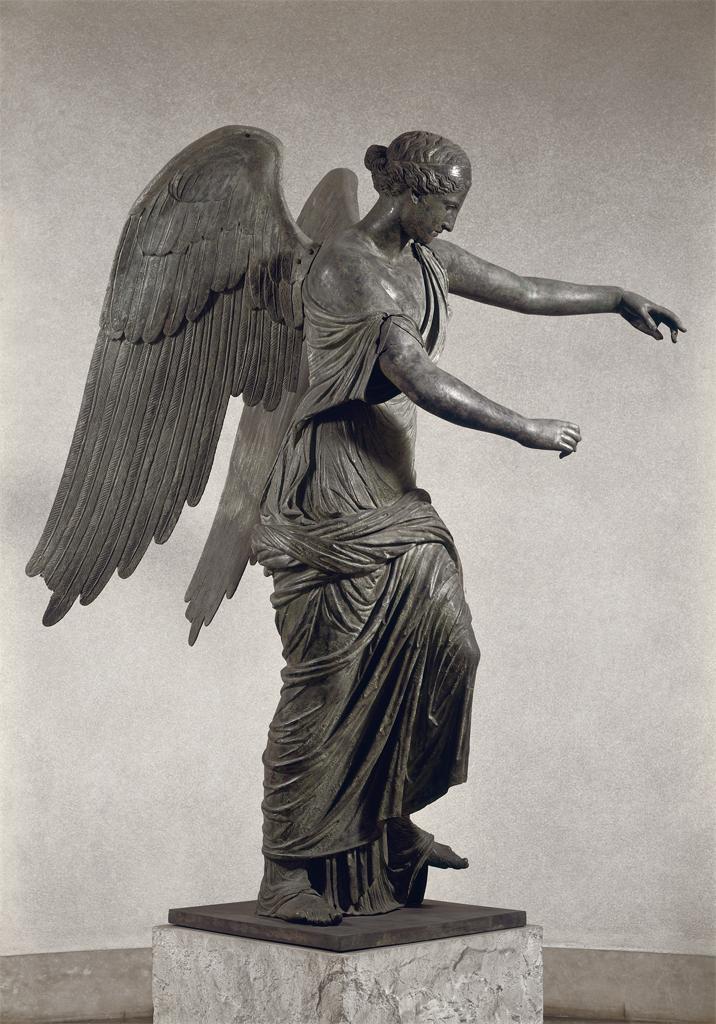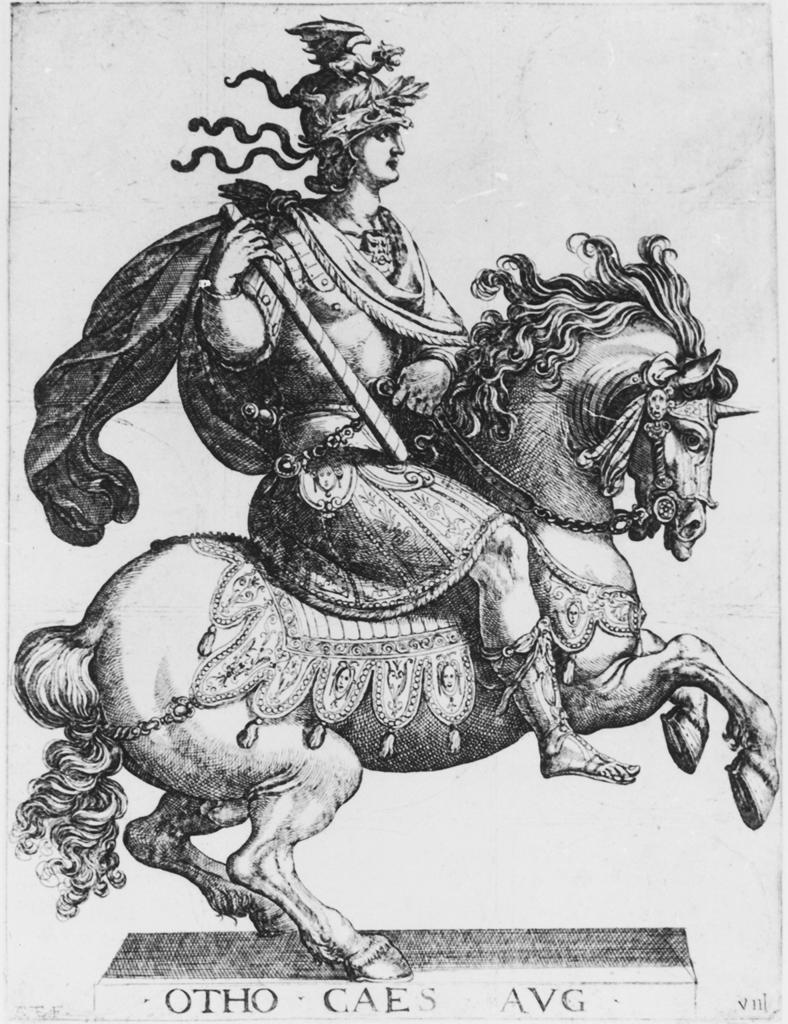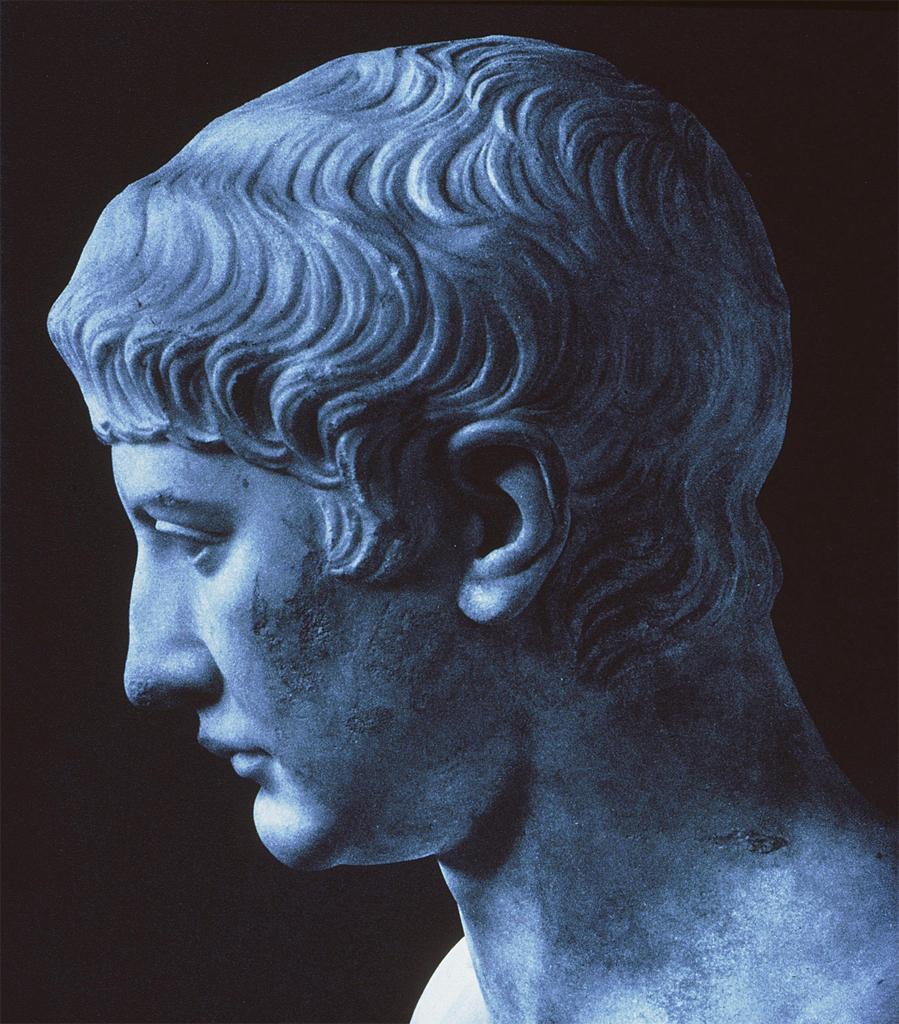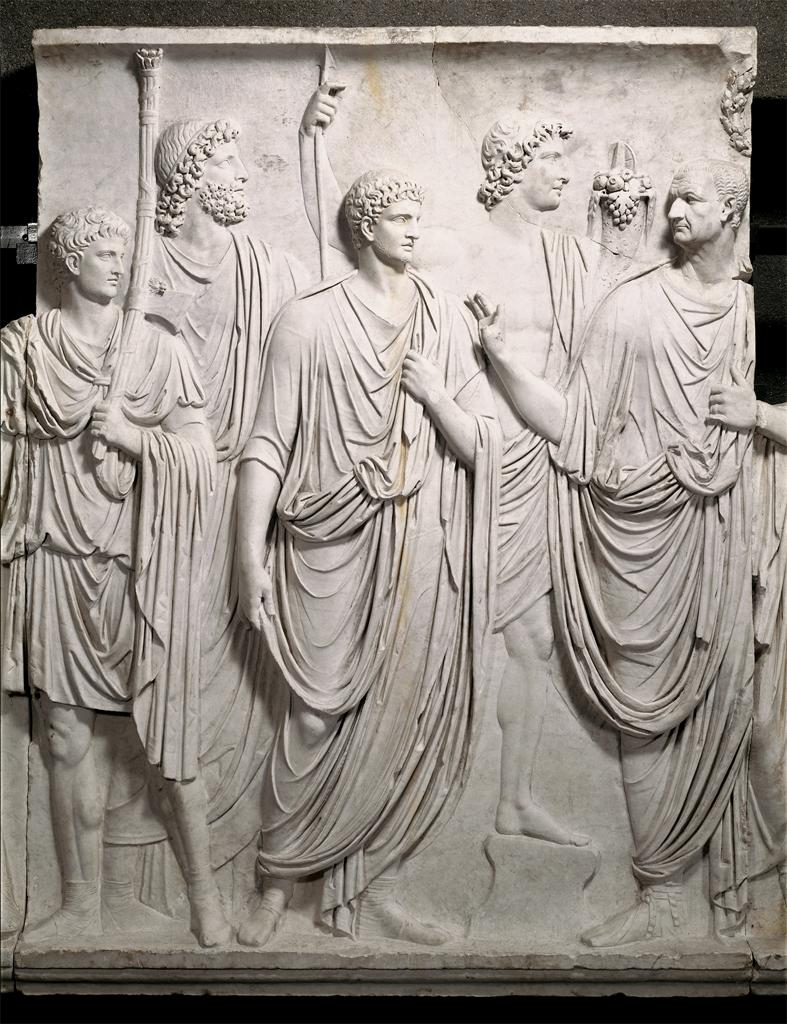Though he had reigned only three months, Roman Emperor Marcus Salvius Otho had showed in this short time more wisdom and grace than anyone had expected when he committed suicide on 16 April 69 following defeat at the Battle of Bedriacum. Otho was immediately succeeded by the also briefly enthroned Vitellius. Vespasian quickly displaced Vitellius and was acknowledged as emperor by the Roman Senate on 21 December 69, a year that had begun with Galba on the throne.
Otho was born into a family that had held the consulship under Augustus. He married Poppaea Sabina, but when the emperor Nero took Poppaea for his mistress— she later became his wife — Otho was sent to govern Lusitania, where he spent a decade cultivating his military as well as diplomatic skills and earning the respect of both the military and the citizens.
Otho joined the rebellion against Nero led by Galba, governor of the neighbouring province of Tarraconensis, in 68. He had hoped to be designated Galba’s successor, but when Galba adopted Lucius Piso Licinianus in early 69, Otho seized power and was proclaimed emperor by the end of January. Before Galba’s death, however, the legions in Germany had declared forVitellius, whose troops were already moving toward Rome. Although substantial forces joined Otho from Illyricum, by early April the Vitellian forces were far stronger.
Otho’s suicide was committed in order to avoid civil war. Controversially as he had come to power, many Romans learned to respect Otho in his death. In fact, many could hardly believe that a renowned former party companion of Nero’s had chosen such a gracious end. Otho’s ashes were placed within a modest monument, but his brief exploits served as inspiration to later Roman authors and artists.
Reference: Don Nardo, “Otho.“ The Greenhaven Encyclopedia of ancient Rome, Greenhaven Press, 2002, p. 47.
Vittoria Alata (Nike of Brescia). Late First century Roman copy of a 4th century BCE original. Found in the Temple of Vespasian, Brescia. Museo di Santa Giulia, Brescia, Italy.
Antonio Tempesta. Emperor Otho on Horseback. The First Twelve Roman Caesars. C. 1596, and Martino Rota. Otho. c. 1596. Both from The Illustrated Bartsch Vol. 35, Italian Masters of the Sixteenth Century. Retrospective conversion of The Illustrated Bartsch.Bust of the Emperor Otho, c. 69. Musée du Louvre, Paris.
Adventus of Vespasian (Cancellaria Relief); detail showing Vespasian and Domitian, 93 – 95. Museo gregoriano profano ex lateranense.
Further Reading: Gwyn Morgan. 69 A.D.: The Year of Four Emperors. Oxford: Oxford University Press, 2007.
Olivier Hekster. Emperors and ancestors: Roman Rulers and the Constraints of Tradition. Oxford: Oxford University Press, 2015.






